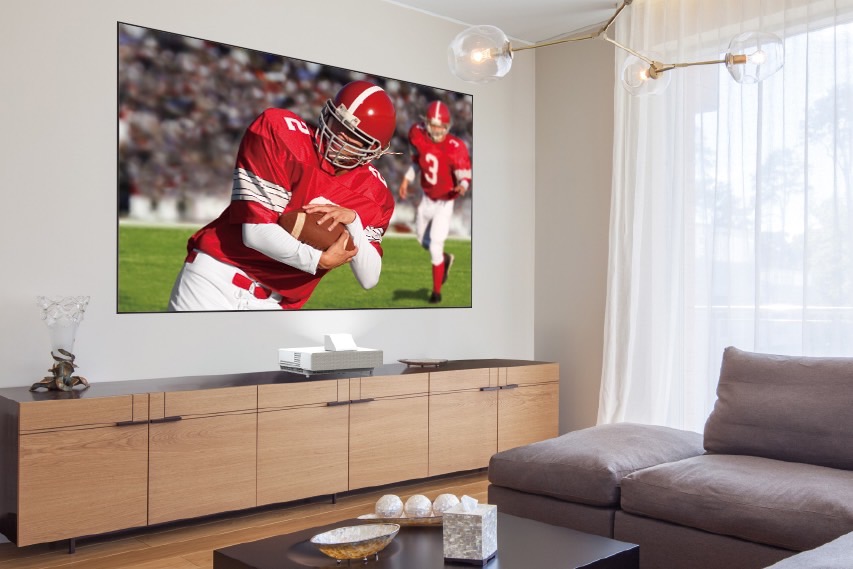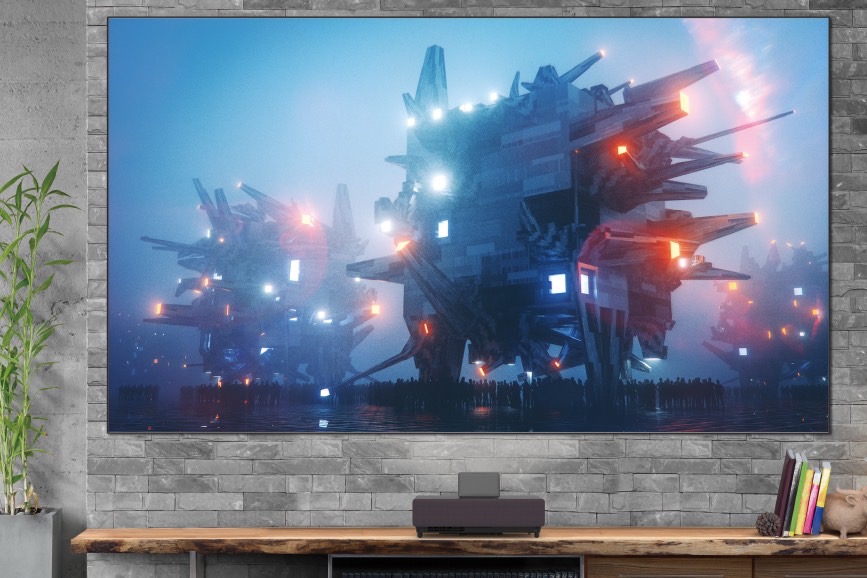Epson has a new short-throw 4K HDR laser TV — the LS500 Laser Projection TV — which comes in two varieties, the $4,999 100-inch model and a $5,999 version that projects a 120-inch image. It’s unusual for laser TV models to be sold with different specified image sizes — they tend to be capable of a variety of projected image sizes depending on how far you place them from the wall. But as odd as that might be, it’s the screen that the LS500 ships with that has our attention. Using a special material that treats incoming light differently based on its angle, Epson claims the projector screen produces “vivid colors and deep blacks for an exceptionally bright, colorful, and sharp picture — in virtually any type of viewing environment.” As you can see in the diagram, the screen’s surface structure acts as a set of angled mirrors, bouncing light that hits it from a low angle (the laser TV in this case) directly at the viewer, while it reflects light from higher angles away from you. That’s a big deal because while projectors have long been the answer to getting the biggest possible image for the lowest possible price, they have a tendency to look less than stellar in any room where you can’t control ambient light.

Unfortunately, Epson says that it won’t be selling these unique screens on their own. This means we ought to tell you a bit more about the LS500, as buying one is — for now — the only way to get your hands on this innovative new screen. At 4,000 lumens, the LS500 is already capable of getting very bright, brighter than several other recently announced laser TVs, including this triple-laser monster Hisense introduced at this year’s CES. Epson calls the LS500 a 4K laser TV, but the way the projector achieves
There’s another important spec that videophiles will want to pay attention to. Despite its compatibility with both HDR10 and HLG video sources, the LS500’s ability to reproduce color goes only as far as Rec.709. To the uninitiated, this means that the laser TV won’t be able to show you every single hue that could be theoretically present on the latest UHD Blu-ray discs, which use the newer BT.2020 color space specification. Again, you may never notice this in day-to-day viewing, but for some, it could be a deal-breaker.
These caveats aside, the LS500 has some great features. It’s 3D-capable if you buy Epson’s optional active 3D glasses — something no current
If the LS500 strikes you as the laser TV you’ve been waiting for — or if you think Epson’s remarkable screen technology is worth the price of admission — the two models go on sale in the first quarter of 2020, but only at Magnolia retailers and select home theater installers.







